First African-American drafted in NFL
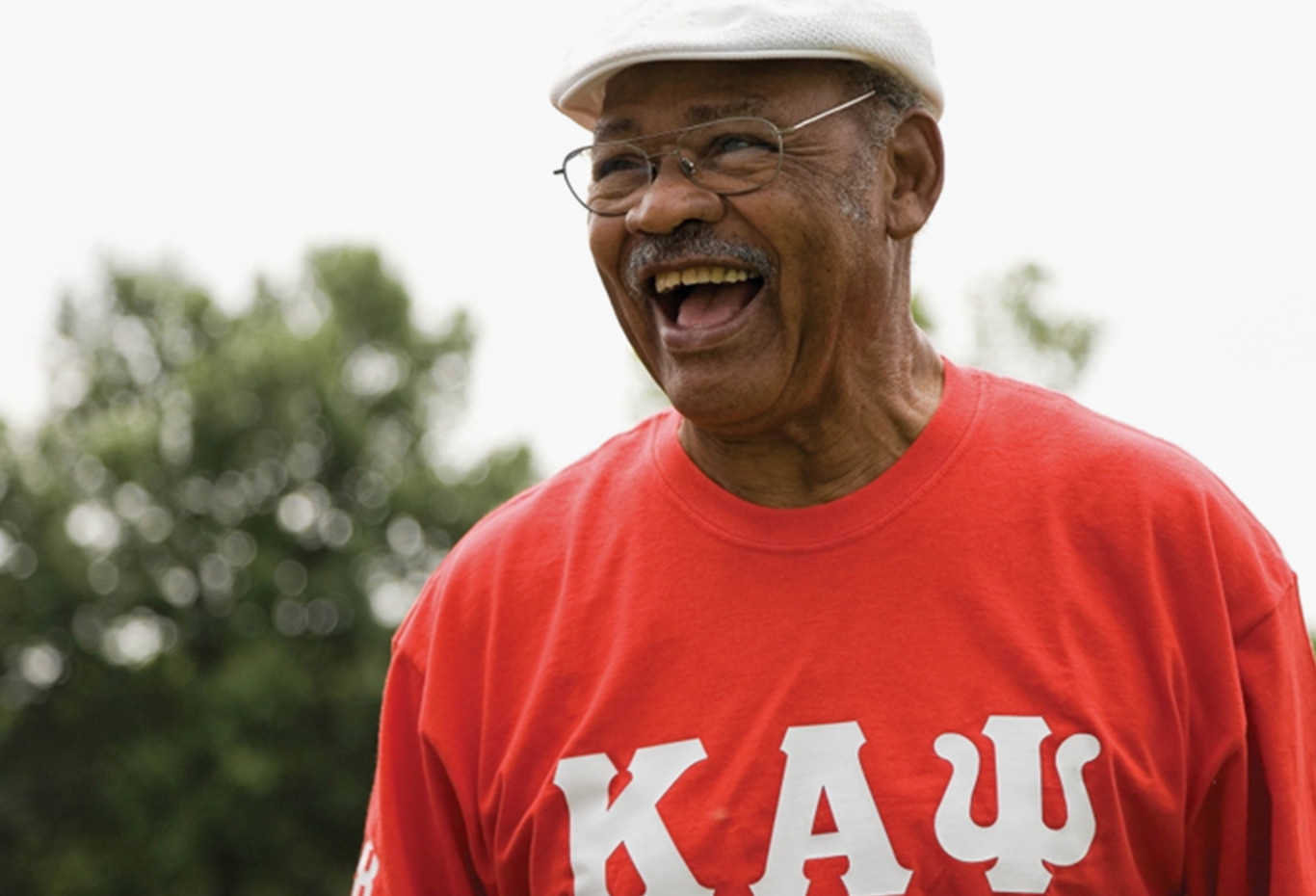
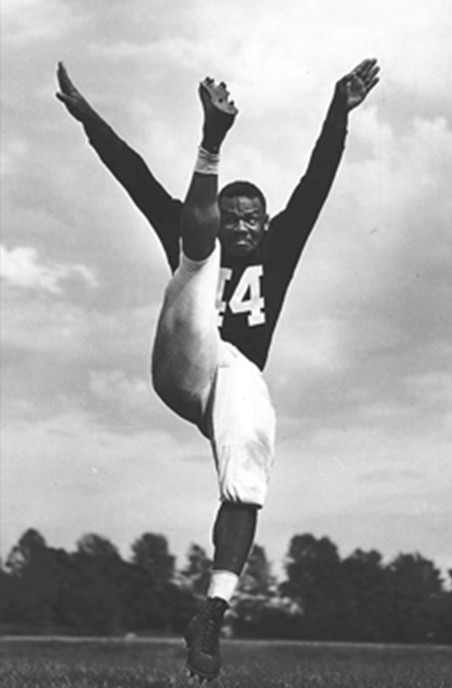
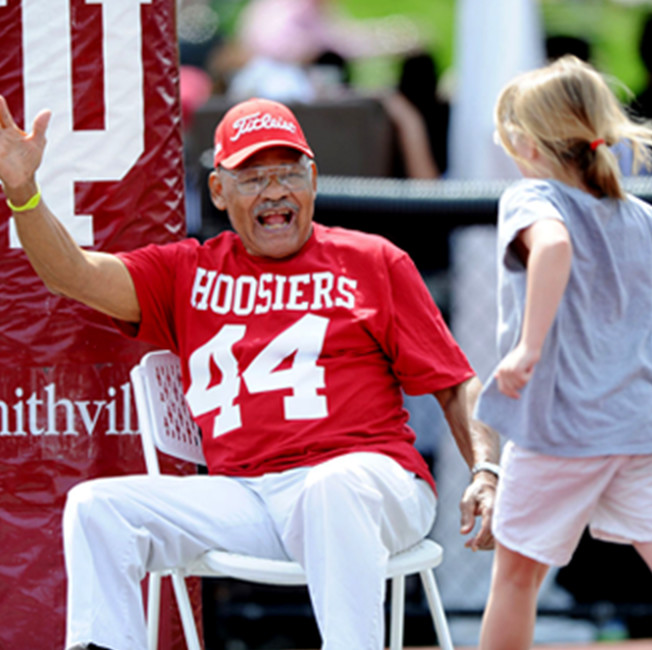
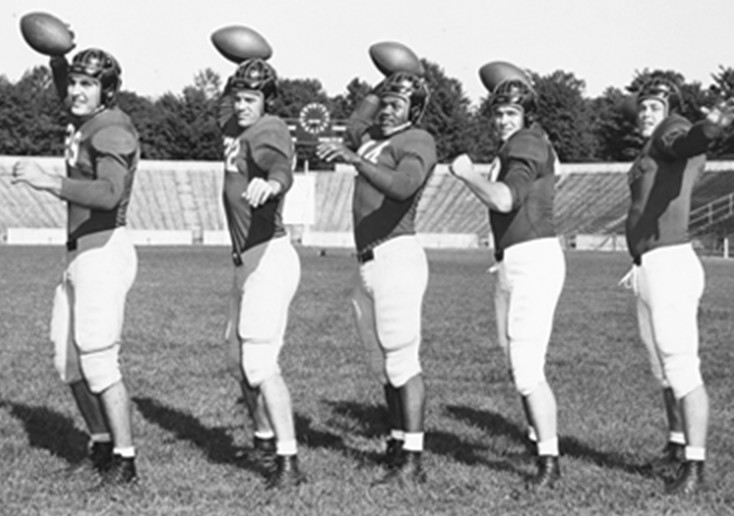
George Taliaferro (born January 8, 1927) was the first African American drafted by a National Football League team. As the leading rusher and an All-American at Indiana University, he led the Hoosier football program to their only undefeated Big Ten Conference championship. The 1945 Indiana Hoosiers football team handed Fritz Crisler and the University of Michigan their only Big Ten loss, a 13-7 win for IU--in Ann Arbor.
A three-time All-American, Taliaferro led the Hoosiers in rushing twice, punting in 1945 and passing in 1948. Taliaferro helped break the color barrier in sports, playing for the Hoosiers two years before Jackie Robinson suited up for the Brooklyn Dodgers. He was inducted into the College Football Hall of Fame in 1981. While at IU, Taliaferro became a member of Kappa Alpha Psi Fraternity.
Taliaferro, a halfback, quarterback, and punter, was picked by the Chicago Bears in the thirteenth round of the 1949 NFL Draft but chose to play instead with the Los Angeles Dons of the All-America Football Conference. He played with the Dons in 1949, then moved to the NFL, where he played with the New York Yanks 1950-51, Dallas Texans 1952, Baltimore Colts 1953-54, and Philadelphia Eagles 1955. He went to the Pro Bowl in 1951, 1952, and 1953.
Glass backboards
On January 19, 1917, the Indiana Hoosiers began playing in the Men's Gymnasium, a Gothic basketball cathedral. The primary focal point of the facility was a 2,400-seat basketball arena on the second floor.
After the first few games spectators complained that they could not see the game because of opaque wooden backboards. The Nurre Mirror Plate Company in Bloomington was employed to create new backboards that contained one-and-a-half inch thick plate glass so that fans could see games without an obstructed view. It was the first facility in the country to use glass backboards.
Swimming stripes
Lorem ipsum dolor sit amet, consectetuer adipiscing elit, sed diam nonummy nibh euismod tincidunt ut laoreet dolore magna aliquam erat volutpat. Ut wisi enim ad minim veniam, quis nostrud exerci tation ullamcorper suscipit lobortis nisl ut aliquip ex ea commodo consequat.
Duis autem vel eum iriure dolor in hendrerit in vulputate velit esse molestie consequat, vel illum dolore eu feugiat nulla facilisis at vero eros et accumsan et iusto odio dignissim qui blandit praesent luptatum zzril delenit augue duis dolore te feugait nulla facilisi.
freeD
Drilled into the balcony overhang are 28 holes, all facing the court, that house newly installed freeD technology cameras. The new instant-replay technology taking the sports world by storm was a gift from IU alumnus Mark Cuban as part of the Mark Cuban Center for Sports Media and Technology, and IU is the first university in the nation to use the equipment.
The 28 cameras are strategically placed around Assembly Hall to capture images from multiple angles. Each camera has its own sensor, collecting pixels and assigning them specific coordinates, or a location. This data is then sent to a control room, where “pilots” and “navigators” harness the data to create a revolutionary 3-D replay experience. The state-of-the-art technology will allow Hoosier fans to see pivotal, “wow factor” moments from virtually any angle.
What is a Hoosier?
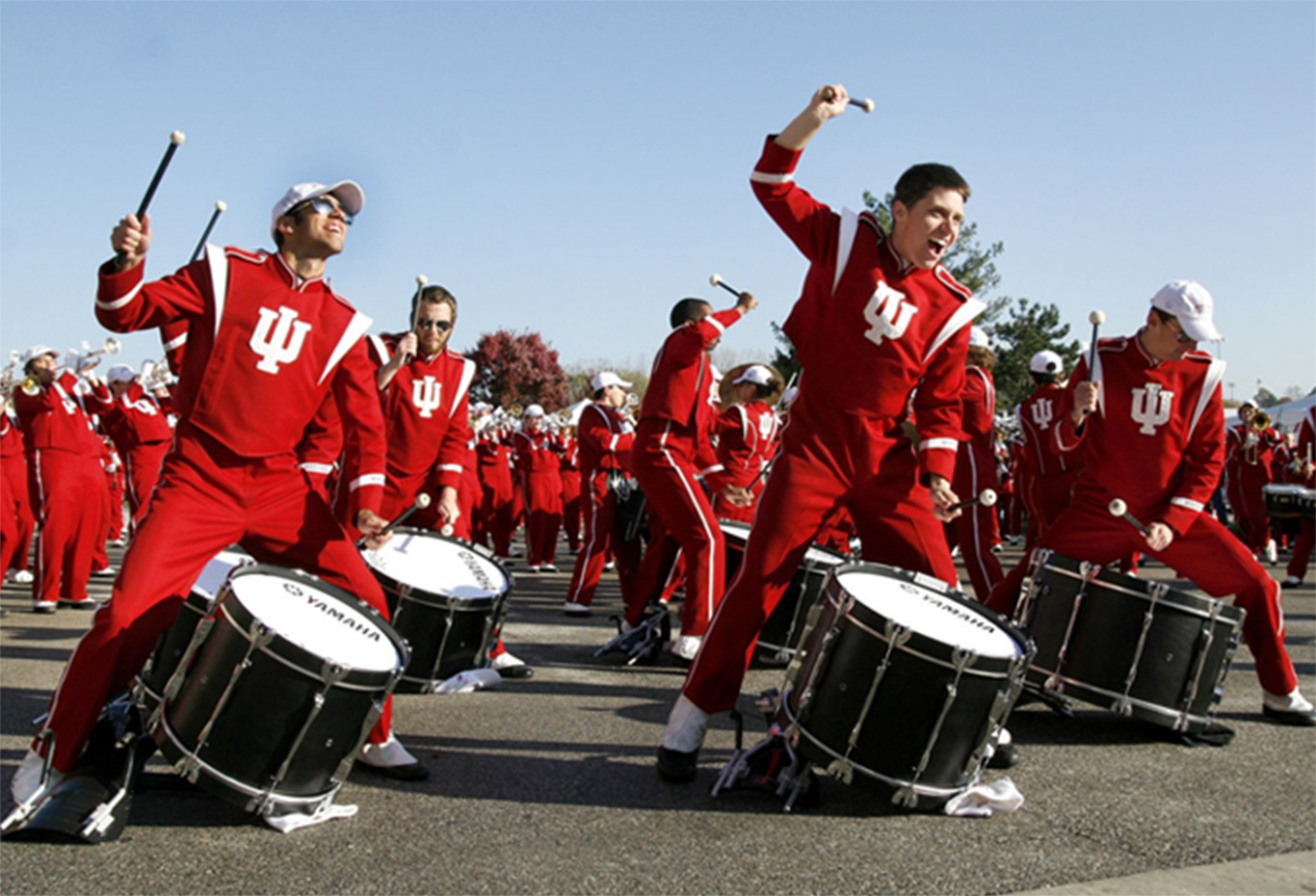
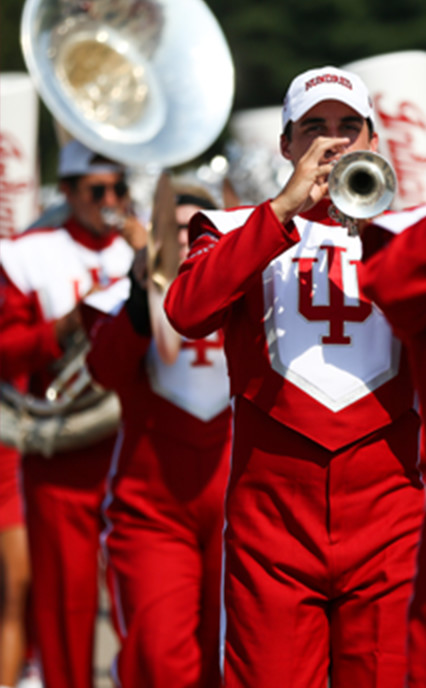
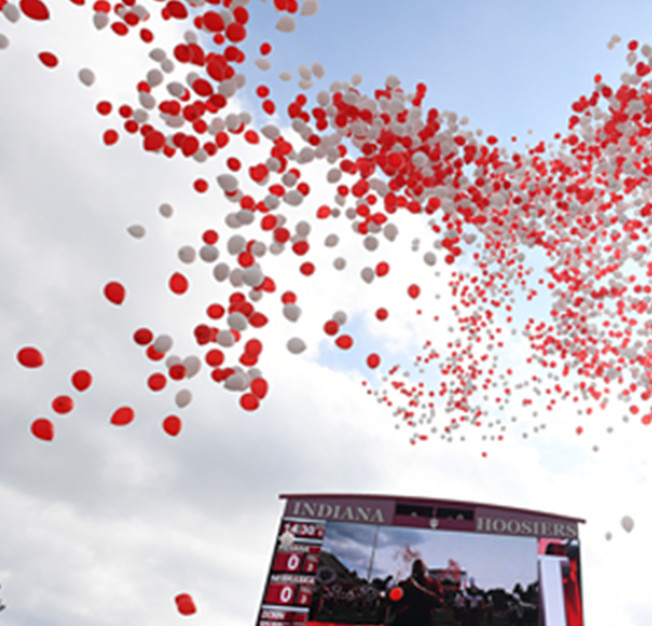
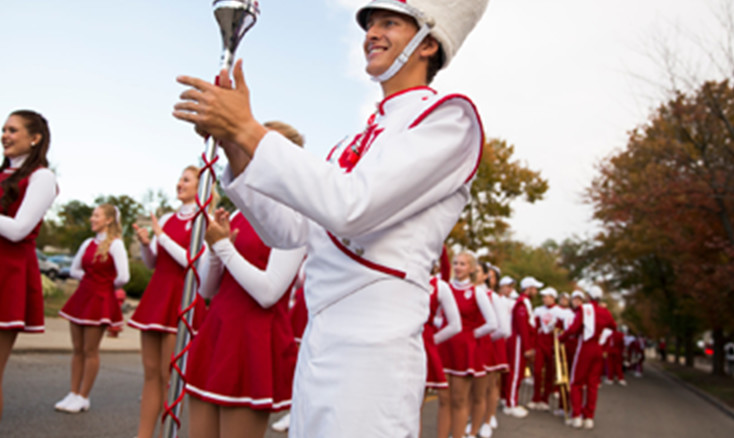
For well over a century and a half the people of Indiana have been called Hoosiers. It is one of the oldest of state nicknames and has had a wider acceptance than most. We know that it came into general usage in the 1830s. John Finley of Richmond wrote a poem, "The Hoosier's Nest," which was used as the "Carrier's Address" of the Indianapolis Journal, Jan. 1, 1833. Whatever may have been the original acceptation of Hooshier this we know, that the people to whom it is now applied, are amongst the bravest, most intelligent, most enterprising, most magnanimous, and most democratic of the Great West
What is a Hoosier, anyway?
A Hoosier is not a mascot. It’s not an animal, a bird, or a mythical creature, either. A Hoosier is a proud member of the IU family. When we need to remind ourselves what that means, we get out our cream and crimson gear or put on our candy-striped pants and go all in to cheer on our athletic teams.
History of Cream and Crimson
IU’s legendary cream and crimson began after debating what colors to put on a Commencement number of The Student in 1888. The class chose cream and crimson “without a dissenting vote.” IU’s famous colors made their debut with the production of the Commencement issue of The Student. Cream and crimson were chosen by the class of 1888 to confront the problem of multiple colors. Crimson and black were the school colors, and the senior class’ colors were cream and gold. In order to eliminate confusion, they combined the two color groupings for the binding and introduced the cream and crimson.
Fists to Blades
Old Oaken Bucket
An old oaken bucket as the most typical Hoosier form of trophy, that the bucket should be taken from some well in Indiana, and that a chain to be made of bronze block "I" and "P" letters should be provided for the bucket. The school winning the traditional football game each year should have possession of the "Old Oaken Bucket" until the next game and should attach the block letter representing the winning school to the bail with the score engraved on the latter link.
Purdue alumnus Fritz Ernst and Indiana alumnus Whiley J. Huddle were appointed to find a suitable oak bucket. They found such a bucket at the then Bruner family farm between Kent and Hanover in southern Indiana.[1] Although the bucket might have been used at an open well on the Bruner family farm that had been settled during the 1840s, the Bruner family lore indicates that the bucket might have been used by General John Hunt Morgan and his "Raiders" during their jaunt through southeastern Indiana during the Civil War.
In accordance with the Chicago alumni organization's resolution, the winner of the bucket gets a "P" or "I" link added to the chain of the bucket with the score, date and the city where the game was played engraved on the link. In case of a tie, an "I–P" link was added. The inaugural Old Oaken Bucket Game ended in a 0–0 deadlock on November 21, 1925, in Bloomington resulting in the very first and most visible link, an "I–P" link, being added to the handle of the bucket.
Old Brass Spittoon
Inspired by the Little Brown Jug, which University of Michigan and Minnesota play for, the two wandered into an antique shop in Lansing. McDermott spotted the spittoon and thought it would be perfect for the rivalry. Inside the spittoon was a note that said the spittoon was in use during the 1800s at a trading post around what is now East Lansing. As the story goes, residents of both Michigan and Indiana would pass by the trading post and use the spittoon while hunting and fishing in Michigan, therefore becoming the basis for the reasoning behind the Old Brass Spittoon. The spittoon was cleaned up, and bought for $25 by McDermott. However, for it to become a rivalry trophy, Indiana had to first accept the challenge of playing for it. McDermott sent a telegram to the Indiana Student Senate telling them about the new found trophy. Their reply? "We the students of Indiana University hereby accept your challenge."
Candy Stripes
Knight’s 1971–1972 squad was the first to play in Assembly Hall and the first to rock the candy-striped warm-ups.
Indiana players wear warm-up pants that are striped red and white, like the stripes of a candy cane. They were first worn by the team in the 1970s under head coach Bob Knight. At the time they were in keeping with the fashion trends of the 1970s, but despite changing styles they have since become an iconic part of playing for Indiana. IU star guard Steve Alford said, "As you watch television and you watch the IU games, that's the first thing you saw, was the team run out in the candy stripes. So when you finally got to put those on, those are pretty special." Rusty Stillions, Director of Indiana's Equipment Operations, said the pants were originally available only for team members. However, changes in licensing agreements permitted the general public to buy them as well.
They have since become a staple at games and other Indiana basketball events. Beginning in 2014, during Hoosier Hysteria, former IU basketball players have presented to the new players their first pair of candy striped pants. This practice symbolizes a "passing-of-the-torch" and carrying on the rich tradition and responsibilities of playing for Indiana University.
hep’s rock
Hep’s Rock: The best IU football tradition is the most symbolic and profound. Former IU Coach Terry Hoeppner found a limestone boulder on the practice field in his first season in Bloomington.He had it moved to its current location in the north end zone where every player would touch the rock before each game. After his death from a brain tumor, the rock now serves as a memorial to him.Today, players touch the rock before running onto the field. The rock will always have a special place with the IU program because anything tapping into emotion and legacy makes for a distinctive tradition.